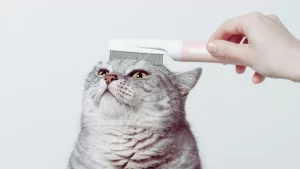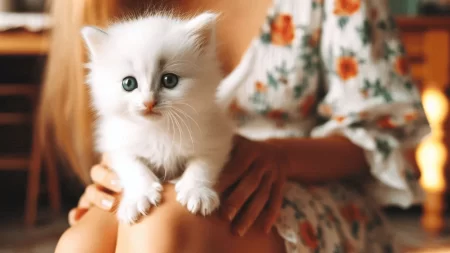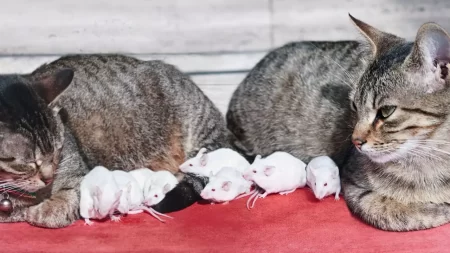Cats can usually stay in a trap for up to 24 hours without health risks. However, some recommend not leaving a cat in a trap for more than 6–8 hours.
Trapping a cat is a stressful and potentially dangerous experience for the animal, and it should be done with care and compassion. Trapping a cat is usually done for the purpose of Trap-Neuter-Return (TNR), a humane and effective method of managing feral cat populations. TNR involves trapping, spaying neutering, vaccinating, and returning the cats to their original locations. TNR helps reduce the number of unwanted kittens, improve the health and welfare of the cats, and prevent nuisance behaviors such as spraying, fighting, and yowling.
The Importance of Proper Cat Trap Care
Trapping a cat is not a simple or easy task. It requires planning, preparation, and patience. A trapped cat is vulnerable to many risks, such as exposure to extreme weather, predators, parasites, diseases, injuries, and dehydration. A trapped cat may also suffer from fear, anxiety, and aggression, which can affect its physical and mental health. Therefore, it is important to follow proper cat trap care guidelines to ensure the safety and well-being of the cat and the trapper.
Best Practices for Trap-Neuter-Return (TNR) of Feral Cats
TNR is a proven and humane way of controlling feral cat populations and improving their quality of life. However, TNR should be done responsibly and ethically, following the best practices recommended by experts and organizations. Some of the best practices for TNR are:
- Use humane traps that are designed for cats, such as box traps or drop traps. Avoid using traps that can harm or injure the cat, such as glue traps, leg-hold traps, or snares.
- Check the traps frequently and regularly, at least every hour or two. Do not leave the traps unattended for long periods of time, especially overnight or in bad weather conditions.
- Cover the traps with a towel or a blanket to calm the cat and protect it from the elements. Make sure the cover does not block the airflow or the trap door.
- Transport the traps carefully and securely, using a vehicle that has enough space and ventilation. Avoid placing the traps in the trunk, the back seat, or near loud noises or smells.
- Take the cats to a veterinarian or a clinic that specializes in spaying or neutering feral cats. Make sure the cats are vaccinated, treated for parasites, and ear-tipped (a painless procedure that removes a small portion of the ear to identify the cat as spayed or neutered).
- Return the cats to their original locations as soon as possible, preferably within 24 hours of trapping. Do not relocate the cats unless it is absolutely necessary for their safety. Relocating cats can cause stress, disorientation, and territorial conflicts with other cats or wildlife.
- Monitor the cats after returning them to their colonies. Provide them with food, water, and shelter, and watch for any signs of illness or injury. Contact a veterinarian or a rescue group if you notice any problems.
Caring for Cats in Traps
While the cats are in the traps, it is essential to provide them with proper care and comfort. Here are some tips on how to care for cats in traps:
Materials Needed
- Humane traps that are clean and in good working condition
- Towels or blankets to cover the traps
- Newspapers or cardboard to line the bottom of the traps
- Gloves and protective clothing to handle the traps
- Food and water bowls that fit inside the traps
- Canned or dry cat food and fresh water
- Litter boxes and cat litter (optional)
- A spray bottle with water and a mild disinfectant (such as vinegar or bleach) to clean the traps
Preparing the Holding Space
- Choose a holding space that is quiet, secure, and temperature-controlled. Avoid places that are too hot, cold, noisy, or crowded.
- Arrange the traps in a single row, leaving enough space between them for air circulation and visibility. Do not stack the traps on top of each other or place them near windows or doors.
- Line the bottom of the traps with newspapers or cardboard to absorb any urine or feces. Replace the lining as needed or when it becomes wet or dirty.
- Cover the traps with towels or blankets to reduce the stress and anxiety of the cats. Leave a small opening at the front of the trap for feeding and checking the cats.
Feeding and Cleaning
- Feed the cats twice a day, preferably in the morning and evening. Use canned or dry cat food and fresh water. Avoid giving the cats milk, as it can cause diarrhea and dehydration.
- Place the food and water bowls inside the traps, near the front. Use bowls that are shallow and wide, and that fit inside the traps without blocking the trap door. Do not use bowls that are too deep or narrow, as they can spill or tip over.
- Remove any uneaten food and empty water bowls after each feeding. Clean the bowls with water and a mild disinfectant before refilling them.
- Spray the traps with water and a mild disinfectant to remove any dirt or odor. Wipe the traps with a clean towel or paper towel. Do not use harsh chemicals or scented products, as they can irritate the cats or trigger allergic reactions.
- Check the cats for any signs of illness or injury, such as bleeding, swelling, discharge, limping, sneezing, coughing, or vomiting. Contact a veterinarian or a rescue group if you notice any problems.







